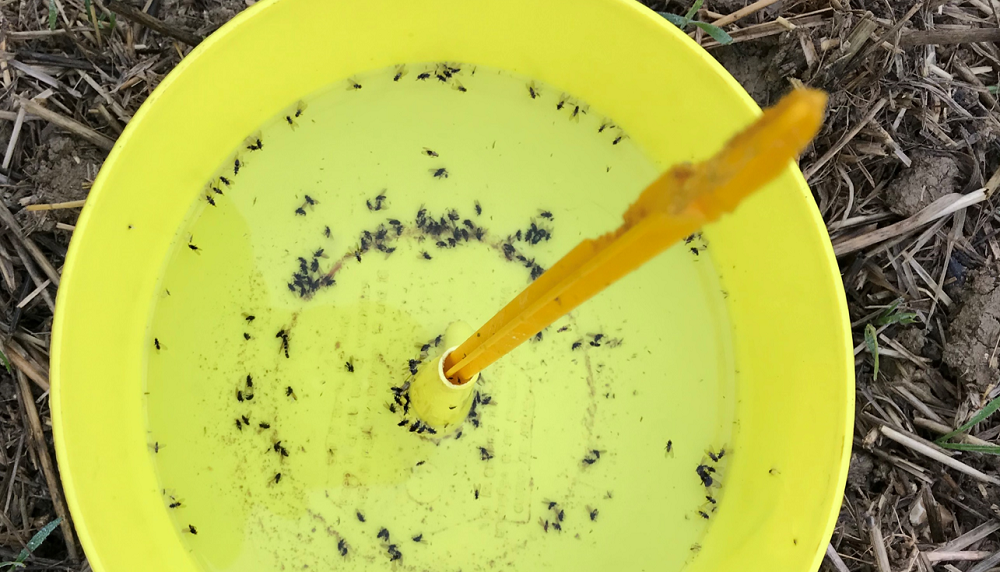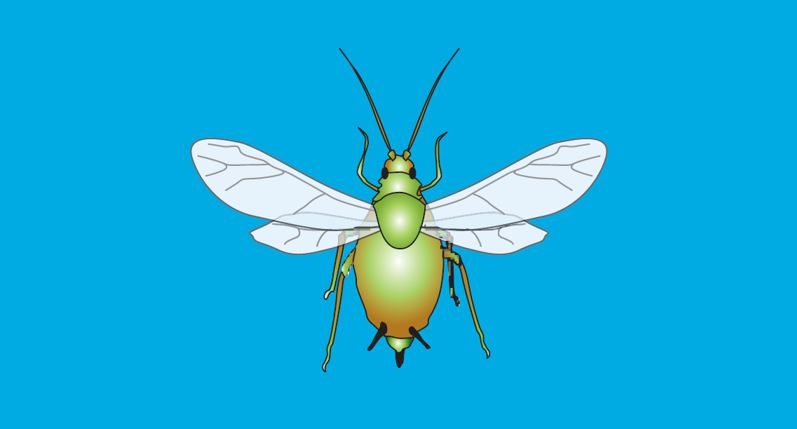- Home
- Knowledge library
- Management of aphid and BYDV risk in winter cereals
Management of aphid and BYDV risk in winter cereals
Summary
Barley yellow dwarf virus (BYDV) is the main virus disease of cereals in the UK, capable of causing yield losses of up to 80% in winter barley and 84% in winter wheat.
The disease is transmitted primarily by bird cherry-oat aphid (Rhopalosiphum padi) and grain aphid (Sitobion avenae).
Control of these aphids has changed dramatically in recent years, with the loss of neonicotinoid seed treatments and the development of moderate levels of pyrethroid resistance in S. avenae.
Control now relies on foliar applications of pyrethroid insecticides, meaning management has progressed little in forty years.
Increased use of pyrethroids risks stronger or new forms resistance appearing in BYDV vectors.
Concerns over the optimal timing of foliar insecticides, overuse of insecticides and insecticide resistance mean that the development of integrated pest management (IPM) for BYDV is critically important.
Project aims
This project aimed to:
- Optimise monitoring of BYDV risk.
- Develop decision support systems (DSS) to guide the use of insecticides and non-chemical control of BYDV.
Monitoring was improved by understanding the relevance of suction trap data for surrounding farms, identifying effective in-field monitoring methods and comparing the cost-effectiveness of different monitoring methods.
New DSS were developed from previously published models, by updating and improving them, before being validating in field surveys and trials.
Project results
Crop surveys showed that suction trap data on aphid numbers was reliable over a smaller area than previously thought, though data on the percentage of aphids carrying BYDV (% viruliferous) was reliable over a greater area.
Water traps were found to be the most effective method of monitoring R. padi within crops, though plant inspection may be the only effective means of monitoring S. avenae.
A BYDV monitoring scheme is proposed.
R. padi were found far more frequently than S. avenae in all regions.
The % viruliferous aphids was notably higher than in previous surveys, especially the RPV serotype, which has implications for varietal tolerance and resistance.
The ACroBAT* DSS developed in this work predicts aphid population dynamics, BYDV epidemiology and risk. It has two functions:
- A spray support DSS, for use once the crop has been sown to provide guidance on the need for sprays and their optimal timing.
- A cultural control DSS, for use in advance of drilling to assist in making choices that can reduce risk, such as field selection, drill date and varietal choice.
The DSS accounts for a range of important variables relevant to BYDV management, such as drill date, aphid pressure, % viruliferous aphids, varietal tolerance and crop economics, with spray decisions calculated based on whether an insecticide is economically worthwhile to prevent the predicted yield loss.
ACroBAT was able to accurately predict BYDV symptoms in surveys of untreated crops. In trials, BYDV control was as good as, if not better than, the T-sum tool, but with fewer insecticide applications, and provided yield benefits where BYDV was present. However, BYDV was generally low in these trials.
*Note: ACroBAT stands for ADAS Crop BYDV Assessment Tool.



